Scalping is a kind of trading that focuses on taking advantage of minute price fluctuations in order to generate profits. Establishing and closing a position rapidly, often in a matter of minutes or even seconds, is typically required for this kind of trading. The goal of scalpers is to earn a profit by imitating more established market makers or experts. In order to profit on the difference between the bid price and the ask price, a trader must 'create the spread' by purchasing an asset at the Bid price and selling it at the Ask price.
If you have ever contemplated engaging in the practise of scalping, one of the very first places you should look is here, at our listing of the very best scalping brokers, to select one that is appropriate for you. However, before we get into that, you might have some other inquiries concerning scalping, or more specifically, regarding the topic at hand, which is the answer to the question of whether or not scalping trading is against the law.
The act of executing a large number of trades in a short amount of time is referred to as 'scalping.' Even though it is not against the law, some brokers might not let you do it. This is a decision that is left up to the broker, and it is typically based on the broker's reputation for handling large amounts of business in a timely manner.
Because this could put too much strain on broker systems and trading networks, there are some that won't permit it. However, using scalping trading strategies is perfectly legal as long as you do not abuse your brokers platform.

🤴 IC Markets is Used By: 180,000
⚡ IC Markets is Regulated by: Australian Securities and Investments Commission (ASIC), Financial Services Authority (FSA), Cyprus Securities and Exchange Commission (CySEC)
💵 What You Can Trade with IC Markets: Forex, Majors, Energies, Metals, Agriculturals,
💵 Instruments Available with IC Markets: 232
📈 IC Markets Inactivity Fees: No
💰 IC Markets Withdrawal Fees: No
💰 IC Markets Payment Methods: Credit Cards, VISA, MasterCard, Debit Cards, Visa, MasterCard, Bank Transfer, PayPal, Neteller, Neteller VIP, Skrill, Poli, Cheque, BPAY, UnionPay, FasaPay, QIWI, RapidPay, Klarna, Electronic wallets (eWallets), Broker to Brokers, Thai Internet Banking, Vietnamese Internet Banking,
IC Markets Risk warning : Losses can exceed deposits

🤴 Roboforex is Used By: 10,000
⚡ Roboforex is Regulated by: RoboForex Lid is regulated by Belize FSC, License No. 000138/7, reg. number 000001272
💵 What You Can Trade with Roboforex: Forex, Minors, Majors, Exotics, Indices, Metals,
💵 Instruments Available with Roboforex: 100
📈 Roboforex Inactivity Fees: No
💰 Roboforex Withdrawal Fees: Yes
💰 Roboforex Payment Methods: Credit cards, VISA, MasterCard, JCB, Debit cards, Bank Transfer, Electronic wallets (eWallets), Neteller, Skrill, Perfect Money, AdvCash, BPAY, China UnionPay, FasaPay, CashU, WeChat Pay, ecoPayZ, AstroPay, Sofort, Giropay, Poli, Wepay, iDEAL, Payoneer,
Roboforex Risk warning : Losses can exceed deposits

🤴 AvaTrade is Used By: 200,000
⚡ AvaTrade is Regulated by: Central Bank of Ireland, Australian Securities and Investments Commission (ASIC), Financial Services Authority (FSA), South African Financial Sector Conduct Authority (FSCA), Financial Stability Board (FSB), Abu Dhabi Global Markets (ADGM), Financial Regulatory Services Authority (FRSA), British Virgin Islands Financial Services Commission (BVI)
💵 What You Can Trade with AvaTrade: Forex, Minors, Cryptocurrencies, Majors, Exotics, Indices, UK Stocks, US Stocks, Energies, Metals, Agriculturals, ETFs, IPO, Bonds,
💵 Instruments Available with AvaTrade: 1000
📈 AvaTrade Inactivity Fees: No
💰 AvaTrade Withdrawal Fees: No
💰 AvaTrade Payment Methods: Credit cards, VISA, MasterCard, Bank Transfer, Electronic wallets (eWallets), PayPal, Neteller, WebMoney, Payoneer,
AvaTrade Risk warning : 71% of retail CFD accounts lose money

🤴 FP Markets is Used By: 10,000
⚡ FP Markets is Regulated by: Australian Securities and Investments Commission (ASIC), Cyprus Securities and Exchange Commission (CySEC), Financial Services Authority (St. Vincent and the Grenadines)
💵 What You Can Trade with FP Markets: Forex, Minors, Majors, Exotics, Indices, Metals,
💵 Instruments Available with FP Markets: 100
📈 FP Markets Inactivity Fees: No
💰 FP Markets Withdrawal Fees: No
💰 FP Markets Payment Methods: Credit cards, VISA, MasterCard, Debit cards, Bank Transfer, Electronic wallets (eWallets), Neteller, BPAY, POLi, PayPal, Neteller, Skrill, PayTrust, NganLuong VN, Fasapay, Broker to Broker, OnlinePay China, Directa24, Klarna, PayTrust88, Payoneer,
FP Markets Risk warning : Losses can exceed deposits
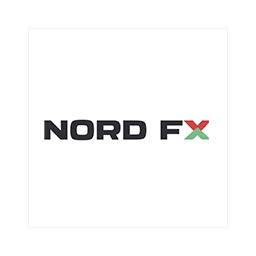
🤴 NordFX is Used By: 10,000
⚡ NordFX is Regulated by: Cyprus Securities and Exchange Commission (CySEC), License No: 209/13
💵 What You Can Trade with NordFX: Forex, Majors, Metals,
💵 Instruments Available with NordFX: 50
📈 NordFX Inactivity Fees: No
💰 NordFX Withdrawal Fees: No
💰 NordFX Payment Methods: Bank Transfer, Neteller, PerfectMoney, WebMoney, FasaPay, CashU, Payza, QIWI,
NordFX Risk warning : Losses can exceed deposits
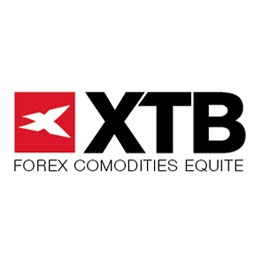
🤴 XTB is Used By: 250,000
⚡ XTB is Regulated by: Financial Conduct Authority (FCA), FCA number FRN 522157, Cyprus Securities and Exchange Commission (CySEC), CySEC Licence Number: 169/12, Comision Nacional del Mercado de Valores, Komisja Nadzoru Finansowego, Belize International Financial Services Commission (IFSC) under license number IFSC/60/413/TS/19, Polish Securities and Exchange Commission (KPWiG), Dubai Financial Services Authority (DFSA), Dubai International Financial Center (DIFC),Financial Sector Conduct Authority (FSCA), XTB AFRICA (PTY) LTD licensed to operate in South Africa
💵 What You Can Trade with XTB: Forex, Minors, Cryptocurrencies, Majors, Exotics, Indices, UK Stocks, US Stocks, Pennystocks, Energies, Metals, Agriculturals, ETFs,
💵 Instruments Available with XTB: 4000
📈 XTB Inactivity Fees: Yes
💰 XTB Withdrawal Fees: No
💰 XTB Payment Methods: Credit cards, MasterCard, Maestro, Visa, Debit cards, Bank Transfer, Electronic wallets (eWallets), PayPal, Neteller, Skrill, Poli, Paysafe, Payoneer,
XTB Risk warning : 76% - 83% of retail investor accounts lose money when trading CFDs with this provider. You should consider whether you understand how CFDs work and whether you can afford to take the high risk of losing your money.

🤴 Pepperstone is Used By: 89,000
⚡ Pepperstone is Regulated by: Financial Conduct Authority (FCA), Australian Securities and Investments Commission (ASIC), Cyprus Securities and Exchange Commission (CySEC), Federal Financial Supervisory Authority (BaFin), Dubai Financial Services Authority (DFSA), Capital Markets Authority of Kenya (CMA), Pepperstone Markets Limited is incorporated in The Bahamas (number 177174 B), Licensed by the Securities Commission of the Bahamas (SCB) number SIA-F217
💵 What You Can Trade with Pepperstone: Forex, Minors, Cryptocurrencies, Majors, Exotics, Indices, Energies, Metals,
💵 Instruments Available with Pepperstone: 100
📈 Pepperstone Inactivity Fees: Yes
💰 Pepperstone Withdrawal Fees: No
💰 Pepperstone Payment Methods: Credit cards, VISA, MasterCard, Debit cards, Bank Transfer, Electronic wallets (eWallets), PayPal, Neteller, BPAY, POLi, UnionPay, FasaPay, QIWI, Payoneer,
Pepperstone Risk warning : CFDs are complex instruments and come with a high risk of losing money rapidly due to leverage. Between 74-89 % of retail investor accounts lose money when trading CFDs. You should consider whether you understand how CFDs work and whether you can afford to take the high risk of losing your money

🤴 XM is Used By: 10,000,000
⚡ XM is Regulated by: Financial Services Commission (FSC), Cyprus Securities and Exchange Commission (CySEC), Australian Securities and Investments Commission (ASIC)
💵 What You Can Trade with XM: Forex, Stock CFDs, Commodity CFDs, Minors, Majors, Exotics, Equity Indices CFD, Energies CFD, Precious Metals
💵 Instruments Available with XM: 1000
📈 XM Inactivity Fees: Yes
💰 XM Withdrawal Fees: No
💰 XM Payment Methods: Credit cards, Debit cards, Bank Transfer, Electronic wallets (eWallets), Moneta, ABAQOOS, PRZELEWY24, Neteller, PerfectMoney, WebMoney, UnionPay, FasaPay, CashU, Payza, QIWI, SOFORT, Giropay, Payoneer, Skrill,
XM Risk warning : CFDs are complex instruments and come with a high risk of losing money rapidly due to leverage. 77.74% of retail investor
accounts lose money when trading CFDs with this provider. You should consider whether you understand how CFDs work and whether you can afford
to take the high risk of losing your money.
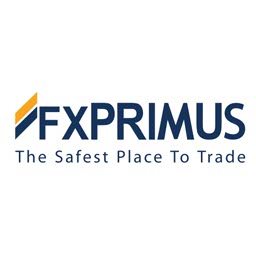
🤴 FXPrimus is Used By: 10,000
⚡ FXPrimus is Regulated by: Cyprus Securities and Exchange Commission (CySEC), Markets In Financial Instruments Directive (MiFID), Vanuatu Financial Services Commission (VFSC)
💵 What You Can Trade with FXPrimus: Forex, Minors, Majors, Exotics, Indices, UK Stocks, US Stocks, Energies, Metals,
💵 Instruments Available with FXPrimus: 130
📈 FXPrimus Inactivity Fees: No
💰 FXPrimus Withdrawal Fees: Varies
💰 FXPrimus Payment Methods: Credit cards, VISA, MasterCard, Debit cards, Bank Transfer, Electronic wallets (eWallets), Neteller, Skrill, Payoneer, SafeCharge, TrustPay, EmerchantPay, Bitcoin, UnionPay, FasaPay, Giropay,
FXPrimus Risk warning : Losses can exceed deposits

🤴 easyMarkets is Used By: 142,500
⚡ easyMarkets is Regulated by: Cyprus Securities and Exchange Commission (CySEC), Australian Securities and Investments Commission (ASIC), Financial Services Authority (FSA), British Virgin Islands Financial Services Commission (BVI)
💵 What You Can Trade with easyMarkets: Forex, Minors, Cryptocurrencies, Majors, Exotics, Indices, Energies, Metals, Agriculturals, Options,
💵 Instruments Available with easyMarkets: 200
📈 easyMarkets Inactivity Fees: No
💰 easyMarkets Withdrawal Fees: No
💰 easyMarkets Payment Methods: Credit cards, MasterCard, Maestro, American Express, JCB, Astropay, Debit cards, Bank Transfer, SOFORT, GiroPay, iDeal, Bpay, Electronic wallets (eWallets), Skrill, Neteller, WebMoney, UnionPay, WeChatPay, FasaPay, STICPAY,
easyMarkets Risk warning : Your capital is at risk

🤴 SpreadEx is Used By: 10,000
⚡ SpreadEx is Regulated by: Financial Conduct Authority (FCA)
💵 What You Can Trade with SpreadEx: Forex, Minors, Cryptocurrencies, Majors, Exotics, Indices, UK Stocks, US Stocks, Pennystocks, Energies, Metals, Agriculturals, ETFs, IPO, Bonds, Options, Treasuries,
💵 Instruments Available with SpreadEx: 15000
📈 SpreadEx Inactivity Fees: No
💰 SpreadEx Withdrawal Fees: 0, minimum £50
💰 SpreadEx Payment Methods: Credit cards, VISA, Switch, Maestro, Debit cards, Bank Transfer, Payoneer,
SpreadEx Risk warning : Losses can exceed deposits

🤴 Admiral Markets is Used By: 10,000
⚡ Admiral Markets is Regulated by: Financial Conduct Authority (FCA), Cyprus Securities and Exchange Commission (CySEC), Australian Securities and Investments Commission (ASIC), Jordan Securities Commission (JSC)
💵 What You Can Trade with Admiral Markets: Forex, Minors, Cryptocurrencies, Majors, Exotics, Indices, UK Stocks, US Stocks, Energies, Metals, ETFs, Bonds,
💵 Instruments Available with Admiral Markets: 148
📈 Admiral Markets Inactivity Fees: No
💰 Admiral Markets Withdrawal Fees: No
💰 Admiral Markets Payment Methods: Credit cards, Visa, MasterCard, Debit cards, Bank Transfer, Electronic wallets (eWallets), PayPal, Neteller, Skrill, SOFORT, Safety Pay, Przelewy, iDEAL, Klarna,
Admiral Markets Risk warning : Losses can exceed deposits

🤴 Axi is Used By: 10,000
⚡ Axi is Regulated by: Financial Conduct Authority (FCA), Australian Securities and Investments Commission (ASIC), Dubai Financial Services Authority (DFSA), Financial Service Authority of St. Vincent and the Grenadines (FSA)
💵 What You Can Trade with Axi: Forex, Minors, Cryptocurrencies, Majors, Exotics,
💵 Instruments Available with Axi: 100
📈 Axi Inactivity Fees: No
💰 Axi Withdrawal Fees: No
💰 Axi Payment Methods: Credit cards, Debit cards, Bank Transfer, Neteller, BPAY, UnionPay, Payoneer,
Axi Risk warning : Losses can exceed deposits

🤴 Swissquote is Used By: 300,000
⚡ Swissquote is Regulated by: Swiss Financial Market Supervisory Authority (FINMA), Commission de Surveillance du Secteur Financier (CSSF), Financial Conduct Authority, Dubai Financial Services Authority (DFSA), Hong Kong Securities and Futures Commission (SFC), Monetary Authority of Singapore (MAS)
💵 What You Can Trade with Swissquote: Forex, Minors, Majors, Exotics, Indices, UK Stocks, US Stocks, Pennystocks, Energies, Metals, Bonds,
💵 Instruments Available with Swissquote: 100
📈 Swissquote Inactivity Fees: No
💰 Swissquote Withdrawal Fees: $10
💰 Swissquote Payment Methods: Credit cards, Debit cards, Bank Transfer, Payoneer,
Swissquote Risk warning : Losses can exceed deposits

🤴 Markets.com is Used By: 4,000,000
⚡ Markets.com is Regulated by: Cyprus Securities and Exchange Commission (CySEC), Financial Sector Conduct Authority (FSCA), Financial Conduct Authority (FCA), Australian Securities and Investments Commission (ASIC), BVI Financial Services Commission (BVI FSC)
💵 What You Can Trade with Markets.com: Forex, Minors, Cryptocurrencies, Majors, Exotics, Indices, UK Stocks, US Stocks, Energies, Metals, Agriculturals, ETFs, Bonds,
💵 Instruments Available with Markets.com: 2200
📈 Markets.com Inactivity Fees: Yes
💰 Markets.com Withdrawal Fees: No
💰 Markets.com Payment Methods: Credit cards, Debit cards, Bank Transfer, Electronic wallets (eWallets), Skrill, Neteller, PayPal,
Markets.com Risk warning : 67% of retail investor accounts lose money when trading CFDs with this provider. You should consider whether you can afford to take the high risk of losing your money

🤴 ThinkMarkets is Used By: 500,000
⚡ ThinkMarkets is Regulated by: Financial Conduct Authority (FCA), Australian Securities and Investments Commission (ASIC), Financial Sector Conduct Authority (FSCA), Financial Services Authority Seychelles (FSA), TF Global Markets (UK) Limited is authorised and regulated by the Financial Conduct Authority FRN 629628, TF Global Markets (AUST) Limited is the holder of Australian Financial Services License number 424700, TF Global Markets (South Africa)(Pty) Ltd is an Authorised Financial Services Provider (FSP No 49835),TF Global Markets Int Limited Is authorised and regulated by the Financial Services Authority Firm Reference Number SD060
💵 What You Can Trade with ThinkMarkets: Forex, Minors, Cryptocurrencies, Majors, Exotics, Indices, Energies, Metals,
💵 Instruments Available with ThinkMarkets: 1500
📈 ThinkMarkets Inactivity Fees: Yes
💰 ThinkMarkets Withdrawal Fees: No
💰 ThinkMarkets Payment Methods: Credit cards, Debit cards, Bank Transfer, Electronic wallets (eWallets), Neteller, Skrill, BitPay,
ThinkMarkets Risk warning : CFDs are complex instruments and come with a high risk of losing money rapidly due to leverage. 71.89% of retail investor accounts lose money when trading CFDs with this provider. You should consider whether you understand how CFDs work and whether you can afford to take the high risk of losing your money

🤴 HYCM is Used By: 10,000
⚡ HYCM is Regulated by: Financial Conduct Authority (FCA), FCA reference number 186171, Cyprus Securities and Exchange Commission (CySEC), CySEC license number 259/14, Cayman Islands Monetary Authority (CIMA), CIMA reference number 1442313, Dubai financial services authority (DFSA), DFSA license number 000048
💵 What You Can Trade with HYCM: Forex, Minors, Cryptocurrencies, Majors, Exotics, Indices, UK Stocks, Energies, Metals, Agriculturals,
💵 Instruments Available with HYCM: 100
📈 HYCM Inactivity Fees: Yes
💰 HYCM Withdrawal Fees: No
💰 HYCM Payment Methods: Credit cards, Debit cards, Bank Transfer, PayPal, WebMoney, Payoneer,
HYCM Risk warning : Losses can exceed deposits
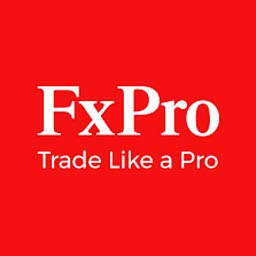
🤴 FxPro is Used By: 1,866,000
⚡ FxPro is Regulated by: Financial Conduct Authority (FCA), Cyprus Securities and Exchange Commission (CySEC), Financial Sector Conduct Authority (FSCA), Securities Commission of the Bahamas (SCB)
💵 What You Can Trade with FxPro: Forex, Minors, Cryptocurrencies, Majors, Exotics, Indices, UK Stocks, US Stocks, Energies, Metals, Agriculturals,
💵 Instruments Available with FxPro: 430
📈 FxPro Inactivity Fees: Yes
💰 FxPro Withdrawal Fees: No
💰 FxPro Payment Methods: Bank, Wire Transfers, Credit cards, Debit Cards, Visa, Maestro, MasterCard, American Express, eWallets, PayPal, Skrill, Neteller, UnionPay
FxPro Risk warning : 75.78% of retail investor accounts lose money when trading CFDs and Spread Betting with this provider

🤴 ForexMart is Used By: 10,000
⚡ ForexMart is Regulated by: Cyprus Securities and Exchange Commission (CySEC)
💵 What You Can Trade with ForexMart: Forex, Minors, Cryptocurrencies, Majors, Exotics, Indices, UK Stocks, US Stocks, Energies, Metals, ETFs, Bonds,
💵 Instruments Available with ForexMart: 111
📈 ForexMart Inactivity Fees: No
💰 ForexMart Withdrawal Fees: 5
💰 ForexMart Payment Methods: Bank Transfer, Visa, MasterCard, Skrill, Neteller, PayCo, fasaPay, Qiwi, Union Pay, AliPay,
ForexMart Risk warning : Your capital is at risk

🤴 Eightcap is Used By: 10,000
⚡ Eightcap is Regulated by: Australian Securities and Investments Commission (ASIC), Vanuatu Financial Services Commission (VFSC)
💵 What You Can Trade with Eightcap: Forex, Minors, Majors, Exotics, Indices, Energies, Metals,
💵 Instruments Available with Eightcap: 100
📈 Eightcap Inactivity Fees: No
💰 Eightcap Withdrawal Fees: Yes
💰 Eightcap Payment Methods: Credit cards, Debit cards, Bank Transfer, POLi, UnionPay, Payoneer,
Eightcap Risk warning : Losses can exceed deposits
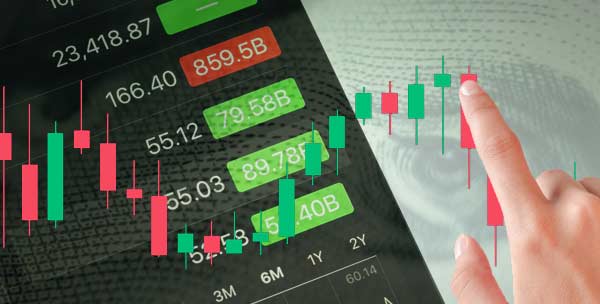
You may not be able to place your trade directly on the underlying market if your broker does not permit scalping trading. This is as a result of the fact that they frequently run their own domestic markets. However, depending on their model of risk management, some may still choose to permit scalping for certain trading accounts; however, you should check with your brokers terms, before engaging in scalping.
Scalping is generally permitted without restriction on STP and ECN brokers trading platforms. Because they operate under a model that does not involve dealing desks, they are able to execute your trades directly on the open market. The fact that they are not the counterparty to your trade does not contribute to their profits; rather, those profits come from spreads and commissions.
The goal of the high-speed trading strategy known as 'scalping' is to open a large number of positions throughout the course of a single trading day. The goal of each trade is to make a small profit from the movement of pips, and positions are typically closed back out within a matter of minutes, or even seconds, at the earliest.
If you want to engage in scalping, you should know that not all brokers support scalping trading features on their platforms. If you are looking for the best broker for scalping, there are a few things that you will need to keep in mind.
In order to protect your profits and lower the likelihood of experiencing slippage, you will need a scalping broker who can execute trades in a lightning-quick and highly effective manner.
In order to execute your trades at the price you require, you will require a broker who not only provides high volume trade identification but also possesses a very high level of market liquidity. If you are unsure how to choose a Forex broker that possesses these features.
Although scalping might appear to have a low level of risk to an new trader looking in from the outside, there are, of course, some risks associated scalping trading. Therefore, you need to ensure that this method of trading is suitable for you and be ready to deal with the challenges and risks that it may present to your trading balance. Always have a risk management strategy in place with scalping trading.
Finding potential opportunities on the road for either gains or losses can be made significantly easier with the assistance of technical analysis and specific trading strategies.
In addition to this, you will need to make quick decisions regarding when to open and close each trade, as well as what exit limits to set for both sides of the trade.
When scalping on live financial markets, a single significant loss can wipe out your trading balance and all your hard work.
The objective is to generate profits from fluctuations in the market that are so minute and quick that they are not even discernible when viewed on a one-minute chart. The length of time that a scalping trade typically lasts is measured in seconds or, at the very most, minutes. This duration is determined by the size of the stake that is being used in the trade.
Scalping is a type of trading that focuses on taking advantage of minute price fluctuations in order to generate profits. Scalpers are day traders who focus on maximising their volume of trades rather than their profit. The only circumstance in which a scalper is likely to remain in a position for a longer period of time is if it does not move in any way.
A trader needs to have a strict exit strategy in order to be successful at scalping. This is because one large loss can wipe out all of the many small gains that the trader has worked so hard to obtain. Therefore, in order for this strategy to be successful, it is necessary to have the appropriate tools, such as a live feed and a direct access broker, as well as the stamina to place a large number of trades.
Traders are able to scalp stocks and shares. Scalping requires price volatility so not all stocks are suited to scalping.
Scalpers trading stocks aim to make profits from many small trades, so scalping stocks are considered higher risk. Stock market exposure should be closely monitored when scalping live stock markets.
One of the most significant benefits of scalping is the potential for very high profits, but this is contingent on the trader being able to successfully implement a stringent exit strategy. Scalpers can profit from even minute shifts in the price of a stock, even if those shifts do not necessarily reflect the larger trend in the price of the commodity for the day.
Scalping is a trading strategy that aims to profit from small price fluctuations in a large number of stocks by maintaining a high degree of leverage and setting frequent stop-loss points. Since scalping is not a directional strategy, one does not require the markets to be moving in a particular direction in order to profit from it. It is effective when the market is exhibiting both upward and downward movement.
Scalping requires making a high volume of trades, which means you will have to pay a commission for each individual transaction. Some traders complete dozens or even hundreds of transactions in a single trading day. Because it requires making a large number of trades in order to generate sufficient profits, scalping also entails paying higher transaction costs than other trading strategies.
Some traders prefer alternative strategies because those strategies enable them to take part in more lucrative speculatie trades. In order to reduce their overall exposure to loss, traders will often engage in a strategy known as scalping. Scalping is a trading strategy that reduces the size of winning trades in exchange for a significant increase in the number of winning scalping trades relative to losing trades.
When scalpers trade, their goal is to make a profit off of the fluctuations in the bid-ask spread of a security. The spread is the difference between the bid price, which is the price at which a broker is willing to purchase an asset from a scalper, and the ask price, which is the price at which the broker is willing to sell the asset to the scalper.
However, under normal conditions, trading is fairly consistent and can result in consistent profits. Because of this, the difference in price between the bid and the ask remains stable, indicating that supply and demand for securities are in a state of equilibrium.
Scalpers will follow stocks that break out to new intraday highs or lows using the Level 2 quotation. This enables them to compile a watch list of 'hot stocks' that are likely to undergo price changes as a result of market activity. The majority of scalpers aim for gains in the range of $0.05 and $0.20 per contract.
A true scalper will execute a large number of trades on a daily basis, sometimes even in the hundreds. It is not possible to conduct this kind of trading without the assistance of supporting systems like Direct Access Trading DAT and Level 2 Quotations. The ability to execute orders quickly and automatically is essential to the success of a scalper.
Traders who have a shorter time frame can use it to look for trends, which may then lead them to pursue a scalp or target a particular bullion price at a short notice.
One of the many ways a trader can improve their cost basis and maximise their profit margins is by engaging in the practise of scalping. This strategy can be implemented in a variety of ways, including the so-called 'umbrella' concept. Putting numerous layers of inter-dealer agreements on top of one another is the method by which umbrella trades are executed.
A trade can be turned into a scalp by taking a profit that is relatively close to having a risk-to-reward ratio of one to one. The amount of profit that is taken is equal to the size of the stop loss that is imposed by the setup. Scalping is a form of risk management that can be used in certain situations.
Scalp trades can be conducted on either the long or the short side of the market. They can be executed during breakouts or while trading in a range-bound environment. Scalping can be applied to a wide variety of conventional chart formations, including triangles and cups and handles, for example. If a trader relies on technical indicators to make decisions, then the same critique applies to those indicators.
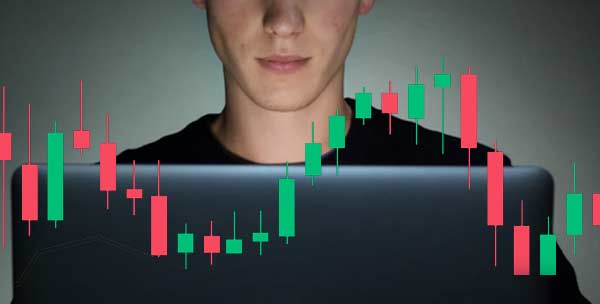
The act of simultaneously posting a bid and an offer for a particular stock is referred to as 'scalping,' and the term refers to the practise itself. This strategy can only work on stocks that are mostly immobile and that trade in large volumes without any significant changes in price, such as financial institutions or energy providers.
Both of these approaches to trading call for a comprehensive knowledge of the market as well as a sound trading strategy.
The most common form of scalping involves the purchase of a large number of shares, which are then quickly sold for a profit based on a relatively minor change in price. The second strategy entails buying several thousand shares at once and then sitting tight in anticipation of a relatively minor price change, which is typically denoted in cents. A highly liquid stock is required for such an approach in order to facilitate easy entry and exit.
A trader will purchase a predetermined number of shares upon receiving any setup or signal from their trading system. The trader will then close the position as soon as the first exit signal is generated that is in close proximity to a risk-to-reward ratio of 1:1. The third form of scalping is one that many people consider to be most similar to more conventional trading practises.
The trading industry has low entry barriers, which has led to an increase in the number of people trying their hand at day trading and other strategies, including scalping. Scalping is a trading style that requires a disciplined approach, so traders who are just starting out in the strategy need to make sure that it is compatible with their personality.
Beginner players who are interested in beginning their own trading business can benefit from the following recommendations.
A beginner should become skilled in the art of effective order execution and should also become familiar with the supporting systems that are available, such as Direct Access Trading and Level 2 Quotations. Because there is a cap on the profit margin per transaction, it is essential that orders be carried out correctly.
During a single trading session, a trader may execute dozens or even hundreds of trades in the course of scalping. Frequent buying and selling will almost certainly result in expensive commissions, which will have the effect of reducing the overall profit. When selecting an online broker, you should look for one that not only provides essentials such as direct access to markets, but also offers commissions that are competitive.
A scalper can enter and leave the market quickly in order to repeat a pattern, so it is helpful for them to be able to recognise trends and momentum in the market. A novice trader needs to have a good understanding of the market pulse, and once they have that figured out, a scalper can use trend trading, momentum trading, and other strategies to make more profitable trades.
Trading on the long side of the board is a good place to start, but in order to achieve the best results, scalpers eventually need to strike a balance between long and short trades. Trading on the buy side is typically more comfortable for beginners, so they should focus their efforts there until they have built up sufficient confidence in trading on the short side.
To better compete with the rising number of high frequency traders (HFT), beginners should familiarise themselves with the fundamentals of technical analysis. HFT stands for 'high frequency traders.'
Scalpers can no longer rely solely on real-time market depth analysis to get the signals they need to book multiple small profits in a typical trading day. This is because real-time market depth analysis has become increasingly unreliable. The moving average ribbon entry strategy, the relative strength/weakness exit strategy, and the multiple chart scalping strategy are the three technical indicators that are best suited for opportunities that are only available for a short period of time.
When support and resistance levels on the 15-minute, 60-minute, or daily charts coincide with your scalping opportunities, you will experience the greatest profits. Keep an eye out for price action at those levels; they will also set up larger scale buy or sell signals on the two minute time frame.
Scalping is a trading strategy that requires making numerous entry and exit decisions in a relatively short period of time. A strategy of this kind can only be successfully implemented when orders can be satisfied, and this is something that is contingent upon the levels of liquidity.
It is generally recommended that all positions be closed out during the trading session of a given day rather than carrying them over to the following trading day. Scalping is based on taking advantage of small opportunities that present themselves in the market, and traders should not deviate from the fundamental principle of holding a position for only a brief amount of time.
By simultaneously putting in a bid and an offer for the same stock, the marketing making strategy seeks to profit from the difference in price between the bid and the ask for that stock. This strategy functions most effectively when applied to stocks that are not exhibiting any real-time price changes, such as stocks related to the healthcare industry.
A trader might purchase thousands of shares all at once and then wait for a minute change in price, which might be as small as a few cents. This is called 'position trading.' Purchasing a large number of shares with the intention of later selling them for a profit while maintaining the expectation that the prices will move in the same direction is yet another strategy.
A trader will buy or sell a certain number of shares based on a signal or setup generated by a trading system, and then they will exit the position as soon as another signal is generated that is close to having a risk-to-reward ratio of one to one.
Scalping in forex is a trading strategy that is utilised by Forex traders on all major, minor and exotic Forex pairs. It involves making a purchase or sale of a currency pair and then keeping the position open for a limited amount of time. A Forex scalper is a trader who focuses on making numerous trades in the hope of profiting from extremely small price fluctuations.
Scalping is a trading strategy that can be very profitable but has a high risk of loss for traders who choose to use it as their primary strategy or even those who use it to supplement other types of trading. Scalping can be used to trade currencies, commodities, stocks and indices. This strategy is common among many different kinds of traders because of its many advantageous characteristics, including a limited amount of market exposure and a high frequency of relatively minor price shifts.
In order to turn a profit in the stock market, scalping traders will employ a wide variety of tactics. When entering the market, some investors do so with a view toward the long term, while others like scalping traders are looking for opportunities to make money on short term price movements. Scalping, also known as point-and-figure trading, and shorting stocks are are common with scalping.
Even though scalping as a trading strategy has been around for quite some time, there are still a lot of people who don't have a good grasp on how it works. The scalping investment strategy is used by both individual and institutional investors. Scalping is used as a primary trading method by some traders, while others employ it in addition to other strategies in their investment portfolios.
Trading on an extremely short time frame is known as scalping. The trader's goal is to generate modest profits through the execution of rapid trades in which a stock is purchased and then sold a few seconds to one minute later. Scalpers engage in dozens or even hundreds of trades on a daily basis in order to raise their probability of making a profit that is meaningful to them.
Scalpers make money off of extremely minute price shifts as well as the bid-ask spread, which indicates whether a share can be sold to a buyer or a seller at the same time as it is being sold. Scalpers profit from both of these factors.
Scalpers favour stocks with high volume because they can enter and exit the market more rapidly. Scalpers monitor recent events and make projections about the future in order to identify stocks that present profitable opportunities. Some investors try to stay away from penny stocks, but traders known as scalpers don't care whether the stock is a power or a penny stock as long as they can make a profit.
Traders look for ways to gain direct market access so that they can profit from the bid-ask spread. Scalping is a form of trading that requires highly advanced trading tools so that trades can be executed in the blink of an eye. Even though Robinhood does not charge any commissions for trades, it is possible that the platform is not useful to investors who want to use the scalping method.
Scalping and day trading are two very distinct trading strategies that couldn't be more different from one another. Traders who engage in day trading are able to maintain a position for several hours, in contrast to those who engage in scalping, in which trades are closed within a matter of seconds or minutes. The primary objective is to finish all of the trades before the market closes for the day.
The position size is another area in which day trading and scalping are differentiated from one another. In order to maximise their profits, scalpers frequently make use of a greater amount of leverage than day traders do. Last but not least, the scalping strategy is preferred by more seasoned traders than the day trading method.
When traders enter the market, they do so with a variety of goals and risk tolerances in mind; consequently, a trading strategy that is successful for one group of investors may not be successful for another group.
Because of the hundreds of trades that are executed every day, users need to look for fees that are competitive. To maintain a competitive advantage, scalpers require leading software and platforms like MT4, MT5 and cTrader, in addition to fast order execution, financial regulation and a wide range of funding and withdrawal methods.
Utilizing trading bots can be an efficient way to put a scalping strategy into action. A large number of trades can be opened and closed by intelligent algorithms based on the criteria that are predetermined. Python and the MetaQuotes scripting language can be utilised on platforms such as MetaTrader 4 to facilitate the development of one's very own custom Expert Advisor (EAs).
We list some Is Scalping Trading Illegal related brokers below.
If you would like to see Is Scalping Trading Illegal compared against each you can do so by clicking on the links below.